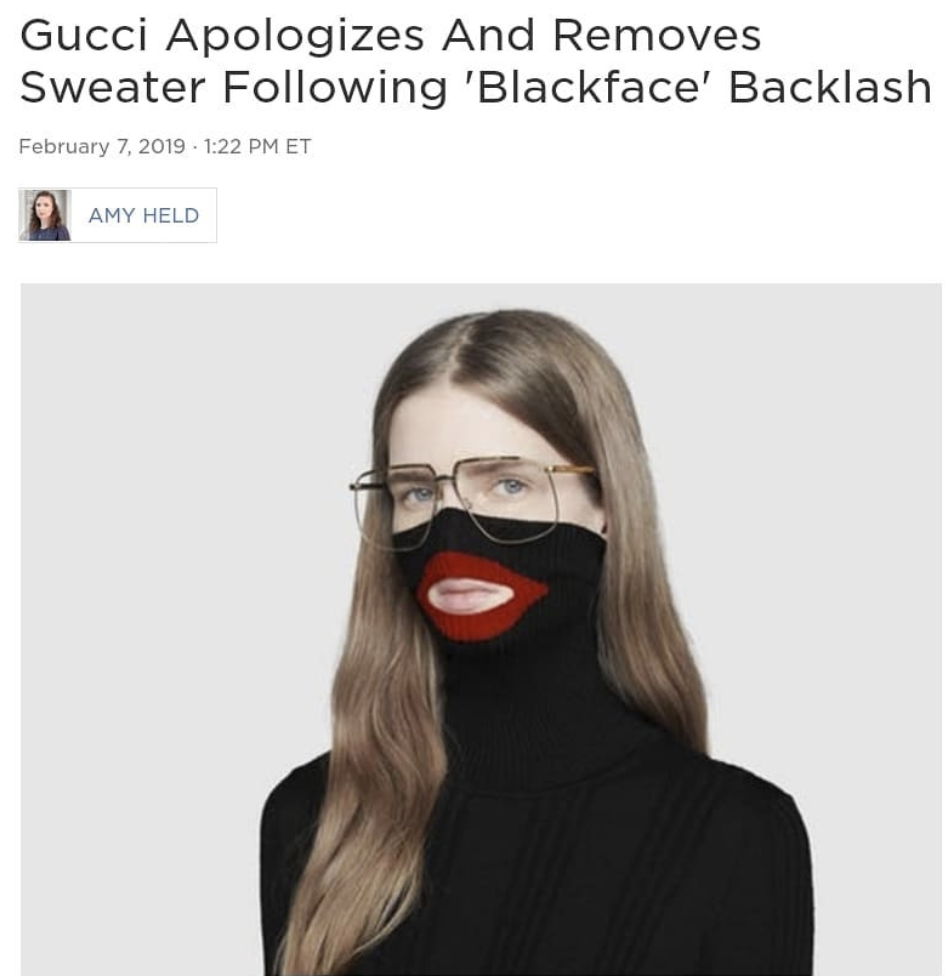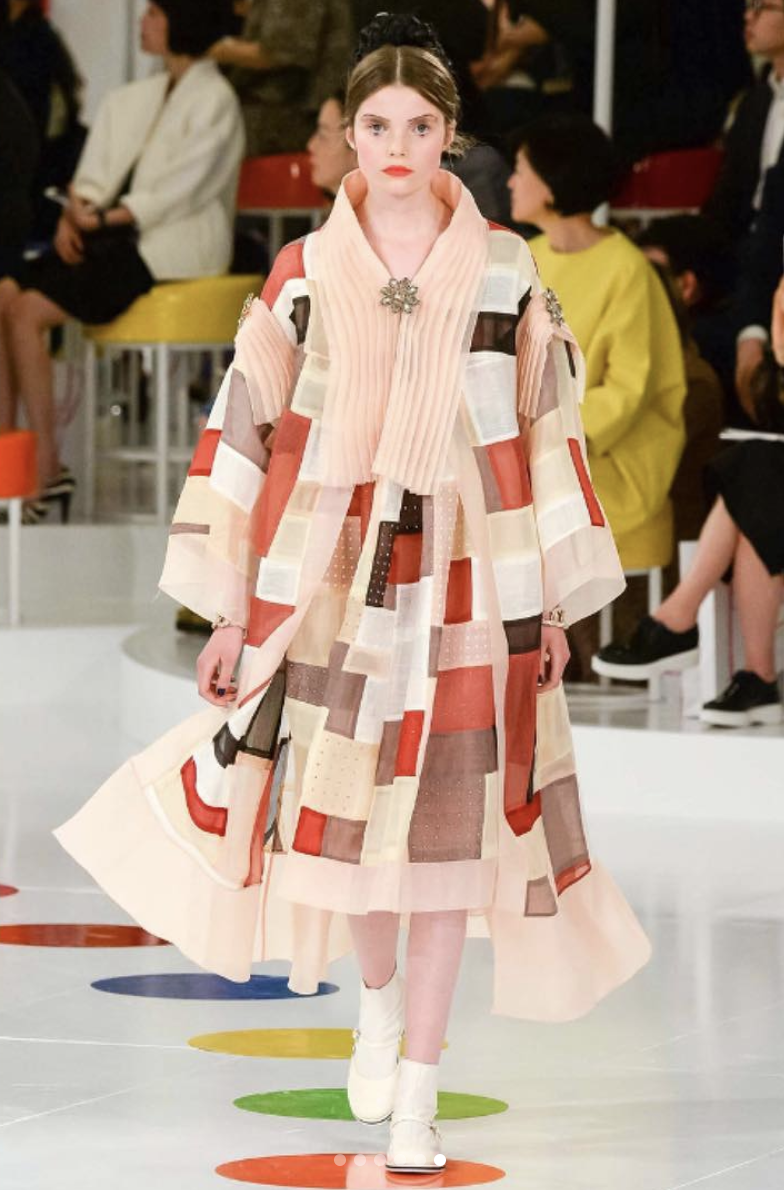I have always been confused by cultural appropriation. As Jenni Avins says, “I find… the idea that I ought to stay in the cultural lane I was born into—outrageous.” I wondered why people would entitle culture to themselves, limiting the opportunity for cultural exchange. I remember when Karl Lagerfeld hosted the 2015/16 Chanel Cruise collection inspired by Korean traditional dressing. As a South Korean, I felt honored and proud to have my country’s heritage in the spotlight of a global fashion brand; I savored the idea of spreading Korean culture to the world. Hence, I could not understand why people were offended by such cultural borrowing and threw accusations of “cultural appropriation” left and right. But at the same time, I had no real idea of what cultural appropriation was and did not take any initiative to understand it.
According to the EverydayFeminism Magazine, cultural appropriation “is not the same as cultural exchange” because “cultural appropriation also refers to a particular power dynamic in which members of a dominant culture take elements from a culture of people who have been systematically oppressed by that dominant group.” Similarly, The Week describes cultural appropriation as when “the more marginalised group doesn’t get a say, while their heritage is deployed by someone in a position of greater privilege – for fun or fashion, perhaps, and out of a place of ignorance rather than knowledge of that culture.” Shocking moments of cultural appropriation on fashion runways include the Gucci blackface knit sweater and most recently, several face accessories starring “bizarre, ‘racist’ accessories like ‘monkey ears’ and oversize lips” created by a graduate of the Fashion Institute of Technology.

Image Source: Instagram
Although the intent of these runway pieces was never to offend viewers or to culturally appropriate, they still sparked outrage from viewers as they seemingly mocked and disregarded the black community. In the fashion world, designers are constantly racking up inspiration from other cultures: Maria Grazia Chiuri attributed her 2020 collection to African culture and Dolce and Gabbana resurfaced Ancient Greece in their 2019 collection. Not to mention, Karl Lagerfeld captured the legacy of Korean fashion in 2015. Despite such “tributes,” fashion designers may still fail to steer clear of cultural appropriation. For example, Jenni Avins writes in an Atlantic article that “Lack of diversity is an issue for the entire industry, but the problem was particularly visible at Valentino, where the designers talked the talk of multicultural acceptance: If that’s the point, the faces on the catwalk—regardless of their hairstyle—should reflect it.” Perhaps the reason I, and many other Koreans, delighted in Karl Lagerfeld’s cruise collection was because he followed up his admiration of Korean culture by hosting the show in Seoul (the heart and capital city of South Korea) and providing adequate representation with Korean models. After all, he opened the show with Sooj Mooj, a Korean model who is a regular in Chanel fashion shows: “I have been working with Chanel for two years and I am more than happy to show the modern and traditional side of Seoul.”
https://www.instagram.com/p/2UgwOxq6JY/

Image Source: Instagram
Maxine Builder best explains the show’s success when she says, “It’s abundantly clear that someone spent the time to understand the references and the history and the color and the designs that make Korean culture unique. This is proof that it’s possible to appreciate a culture through fashion without appropriating it, and we all can learn a lesson from that.”
From my research, I can safely conclude that catastrophic cultural appropriation can be avoided if the “borrowing” group not only respects, but also credits the original culture. Take the Japanese women dressing as Chicanas, for example. The video created by Refinery29 uncovers the complexity of cultural appropriation and helps audiences to understand how cultural appropriation may be instigated by a deep respect for another culture. In a conversation between host Connie Wang and Denise Sandoval, a professor of Chicana & Chicano studies at California State University Northridge, about the Japanese adoption of Chola style, an important realization was uncovered: the Japanese women were “making their own meaning” from Chicana culture and “finding liberation and freedom in” it. To me, this form of cultural appropriation feels acceptable, as the Japanese women are defying their conservative and feminine cultural confines by embodying the fierce and rebellious Chicana spirit. They are using cultural appropriation as a form of self-expression.

Image Source: Youtube
However, the borders of cultural appropriation are still fuzzy. Perhaps this explains why The New Yorker magazine decided to publish Calvin Trillin’s Have They Run Out of Provinces Yet? poem despite possible controversy: to incite a conversation around cultural appropriation. Though Calvin Trillin seems innocent in his intent for writing the poem—“[I] was simply… making fun of food-obsessed bourgeoisie”—many readers were offended by his description of Chinese cuisine. This is understandable as his poem seemingly pokes fun at Chinese stereotypes by using words and phrases such as, “slurped,” “a new province arrived,” and most distinctly, “Have they run out of provinces yet?” Here, readers see an “old and white [man]… clueless about sensitive matters such as stereotyping, cultural reductionism, casual racism and cultural appropriation” and therefore, conclude that his poem “reflected fear and ignorance of China, depicting it as teeming with overwhelming numbers of people and places.” The poem is an example of when cultural appropriation becomes sticky, with people arguing about whether or not the cultural appropriator is acting respectful towards the culture. In this case, Calvin Trillin failed to project a positive view of Chinese culture, making the poem feel uneasy to readers.
That being said, cultural appropriation is a fragile concept—a hit or miss. We can never be completely sure to avoid cultural appropriation, as every day brings about a new inspiration, whether it is from another concept, person, or culture. I completely agree with Jenni Avins that “there are legitimate reasons to step carefully when dressing ourselves with the clothing, arts, artifacts, or ideas of other cultures. But please, let’s banish the idea that appropriating elements from one another’s cultures is in itself problematic.” Instead, let’s make sure that when we are “culturally appropriating,” we do it in a way that celebrates and deeply connects us to another culture—or as Connie Wang says, “a world where culture isn’t only where you come from, but also where you fit in.”
Featured Image via Instagram












